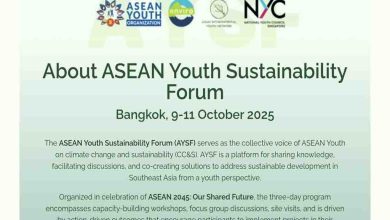What India’s Indus Waters Treaty Suspension Means for Pakistan in 2025 | Impacts, Risks & Future
Discover the real impact of India's Indus Waters Treaty suspension on Pakistan. Learn how water, agriculture, and politics intersect in this high-stakes crisis.
The Indus Waters Treaty suspension by India marks a turning point in South Asian geopolitics. For over six decades, the Indus Waters Treaty (IWT) symbolized peaceful cooperation between India and Pakistan, allowing shared access to the Indus River System—an essential water source for nearly 1.6 billion people.
But on the heels of a deadly attack in Jammu and Kashmir’s Pahalgam area, India has decided to suspend the IWT, stating national security and counter-terrorism concerns.
What is the Indus Waters Treaty (IWT)?
Signed in 1960 by Indian PM Jawaharlal Nehru and Pakistani President Ayub Khan, the IWT was brokered by the World Bank to regulate the flow of six major rivers:
-
India controls: Ravi, Beas, Sutlej (Eastern Rivers)
-
Pakistan controls: Indus, Jhelum, Chenab (Western Rivers)
Under this agreement, India is obligated to allow the uninterrupted flow of the Western rivers to Pakistan, with limited rights to construct “run-of-the-river” hydroelectric projects that do not alter water flow.
📖 Learn more from the World Bank’s official Indus Waters Treaty overview.
Why Did India Suspend the Treaty in 2025?
In April 2025, a terrorist attack in Pahalgam claimed 26 lives. India swiftly pointed fingers at cross-border terrorism and issued a temporary suspension of the IWT.
“The Indus Waters Treaty of 1960 will be held in abeyance with immediate effect, until Pakistan credibly and irrevocably abjures its support for cross-border terrorism.”
— Vikram Misri, India’s Foreign Secretary
This move shocked global observers and raised alarms over water security, regional peace, and diplomatic trust.
How the IWT Works
The IWT allows India:
-
To irrigate up to 1.34 million acres in Jammu & Kashmir
-
To store up to 3.6 million acre-feet (MAF) of water on the Western rivers
-
To build hydroelectric power projects like:
-
Kishenganga Dam (330 MW)
-
Ratle Hydroelectric Plant (850 MW)
-
Pakistan is permitted to object to any design that threatens downstream flow. Most of its objections focus on how these Indian projects might disrupt flow volumes and violate treaty terms.
What India’s Indus Waters Treaty Suspension Means for Pakistan
Water Dependency Crisis
Pakistan receives around 80% of the Indus system’s waters. While India gets about 3.3 crore acre-feet, Pakistan relies on over 13 crore acre-feet.
This water supports:
-
23% of Pakistan’s total agriculture
-
68% of its rural livelihoods
Without this water, Pakistan risks reduced crop yield, food insecurity, and social unrest—especially with poor storage capacity.
Inadequate Infrastructure
Pakistan’s major dams—Tarbela and Mangla—can only store 14.4 MAF, a fraction of its annual entitlement. During seasonal shifts or withheld flows, massive shortages can cripple its agriculture and industry.
India’s Legal Rights Under the Treaty
While Pakistan voices concerns, India still holds significant legal rights:
-
Irrigate large tracts of land in J&K and Ladakh
-
Construct run-of-the-river dams
-
Store water under specific thresholds
India currently irrigates 6.42 lakh acres, far below the permissible 13.4 lakh. Most planned reservoirs for storage haven’t yet been built, giving India both legal leverage and future strategic room.
What Experts Are Saying
Water experts and analysts warn that the Indus Waters Treaty suspension sets a dangerous precedent.
“Weaponizing water during conflict dilutes decades of cooperative diplomacy. This could ripple across other transboundary water treaties globally.”
— Dr. Meera Srinivasan, Hydropolitics Researcher
“Any action that blocks water, even temporarily, escalates regional instability—Pakistan’s food and economic systems are too dependent.”
— Prof. Adeel Khan, Lahore School of Economics
Some also argue that India is using the treaty’s limitations to its advantage in diplomacy, without violating its core clauses—yet.
What Happens Next?
Possible Scenarios:
-
Diplomatic Talks Resume: Under international pressure, both sides could return to negotiations.
-
Water Warfare: If the suspension leads to reduced water flow, Pakistan may escalate tensions diplomatically—or otherwise.
-
Global Mediation: Countries like China, Turkey, or the UN may offer to mediate.
Conclusion
India’s decision to suspend the Indus Waters Treaty in 2025 is a watershed moment in India-Pakistan relations. While India asserts its right to national security, the hydrological cost to Pakistan could be severe. Both nations must tread carefully to avoid turning this water-sharing treaty into a water-war trigger.
For the sake of over a billion lives, it’s essential that diplomacy flows once more—just like the rivers that have long defined their shared destiny.







